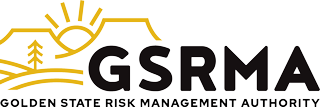After a long hiatus due to focusing on the COVID-19 Pandemic, Cal/OSHA is again revisiting an Indoor Heat Illness Standard. The standard is currently under a 45-day Public Comment Period, with the Cal/OSHA Standards Board having a public hearing May 18th, 2023.
Barring changes from the public hearing, the standard has several important definitions and thresholds our districts need to be aware of. This standard will apply to any district that has indoor work area 82 degrees Fahrenheit when employees are present. “Indoor” is defined as a place that is under a ceiling or overhead covering that restricts airflow and is enclosed along its entire perimeter by walls, doors, windows, dividers, or other physical barriers that restrict airflow, whether open or closed.
Additionally, this standard applies to indoor work areas if:
- The temperature equals or exceeds 87 degrees Fahrenheit when employees are present.
- The heat index equals or exceeds 87 degrees Fahrenheit when employees are present.
- Employees wear clothing that restricts heat removal, and the temperature equals or exceeds 82 degrees Fahrenheit.
- Employees work in a high radiant heat area, and the temperature equals or exceeds 82 degrees Fahrenheit.
If your district has indoor work areas that meet or exceed any of the previous mentioned temperature thresholds, you must:
- Employees must have access to potable drinking water. The water must be fresh, pure, suitably cool water provided free of charge and must be located as close as practicable to the areas where employees are working and in indoor “cool-down areas.”
- Employees must have access to “cool-down areas.” A “cool-down area” is defined as an indoor or outdoor area that is blocked from direct sunlight, shielded from other high radiant heat sources, and either open to the air or provided with ventilation or cooling.
- Employers must use control measures to minimize the risk of heat illness. This includes engineering controls such as air conditioning; administrative controls such as rotating employees, scheduling work earlier or later in the day, or changing required work clothing; and personal heat-protective equipment such as water-cooled garments, cooling vests, or heat-reflecting clothing.
- Employers must implement effective emergency response procedures.
- Employers must closely observe employees during acclimatization. Specifically, all employees must be closely observed during a heat wave if no engineering controls are utilized. Further, any new hire must be closely observed for the first 14 days of employment during a heat wave.
- Employers must provide effective training to all employees regarding exposure to heat illness.
- Employers can integrate the measures into an existing injury and illness prevention program, an existing heat illness prevention plan, or create a separate policy.
Notably, this standard does not apply to places of employment where employees telework from a location of their choice.
Employers who have employees work in outdoor environments of 80 degrees will also need to comply with existing rules of Heat Illness Prevention Standard for developing an effective Heat Illness Prevention Program, including:
- Plan – Develop and implement an effective written heat illness prevention plan that includes emergency response procedures.
- Training – Train all employees and supervisors on heat illness prevention.
- Water – Provide drinking water that is fresh, pure, suitably cool and free of charge so that each worker can drink at least 1 quart per hour, and encourage workers to do so.
- Rest – Encourage workers to take a cool-down rest in the shade for at least five minutes when they feel the need to do so to protect themselves from overheating. Workers should not wait until they feel sick to cool down.
- Shade – Provide proper shade when temperatures exceed 80 degrees. Workers have the right to request and be provided shade to cool off at any time.
In efforts to assist employers in implementing Heat Illness Prevention Plans, Cal/OSHA has developed the following tools:
- Employer Sample Procedures for Heat Illness Prevention
- 99calor, featuring training materials in 5 languages
- Heat Illness Prevention eTool
Please reach out to our Member Services Team if you have any questions about the new Indoor Heat Illness Prevention Standard or developing or implementing a Heat Illness Prevention Program.

